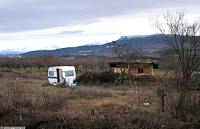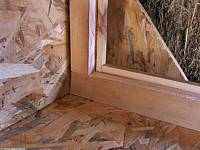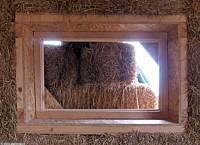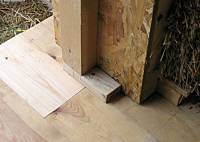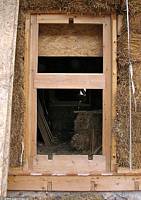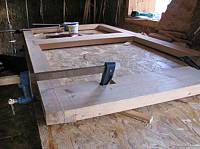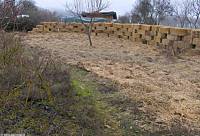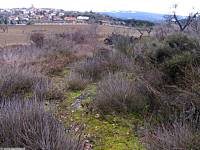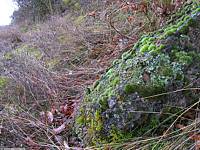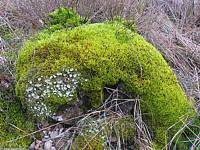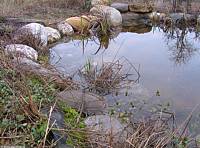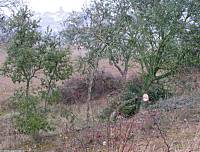|
|
Nature
Switched On
|
|
|
introduction |
2009 January 31, February 1 & 2, Saturday to Monday
|
The hill in the distance covered with some recent snow. |
|
The smaller window (102x67cm) won't be openable so it was
relatively easy to build a typical casing for the double-glazing.
|
||
|
Window casing in place but not fixed. Definite
fixing will be done after the purchase of the custom made double
glazing. |
Detail of the window casing. The OSB triangle is just a temporal brace to maintain the window box rectangular. Sunday 10:00 |
|
|
The door is a more critical affair. It should be strong and fit
perfectly in its casing when closed. I used 46 mm thick boards that
were left over from the roof. Abundant glue and tightly fixed clams
were needed to make a solid structure.
|
||
|
The extra foot fixed on the floor, the door
casing and the door box helps to keep the door in place. |
||
|
The skeleton of the door, glued and clammed
together. It will have one week to dry. |
The skeleton of the door before
being glued. Sunday 15:34 |
|
|
The garden wall was more or less finished. As commented
before, the PE sheets
were removed from the top and, instead, used for separating the
ground and the bottom of the bales of the new western wall. The
northern wall has a foot of salvaged wooden boards to overcome the
slope and lift the bales from the ground. |
||
|
Overview of the future vegetable
garden, seen from the south-east. Sunday 9:50 |
||
|
On many parts the terrain offers a remarkable green aspect thanks to
the abundance of mosses and lichens. They respond of course to the
wet weather conditions but I think another important factor is
the inflow of water from higher
grounds. The position of the terrain, more or less at the foot of a
minor mountain ridge, will be resp
Along the edge of the upper pond I had put lumps of moss last year and most of them had started to grow quite energetically. The black EPDM liner is giving some extra shade and humidity and perhaps in time will be overgrown by the moss. |
||
|
Moss covered soil between the dwarf shrubs of
Satureja montana on the lowest terrace. |
||
|
Central, middle terrace where moss growth is
exceptionally vigorous. |
|
|
|
Upper pond with moss partly covering the EPDM
sheet. |
||
|
The walnut (Juglans regia) is a 'permaculture'
favourite, especially because of its record production of nutritious nuts. It
is adapted to d
|
||
|
Young Walnut tree in the centre.
On the right, the Holm oak with an amputated arm. Looking east. Sunday 9:48 |
||
|
introduction
|
|
